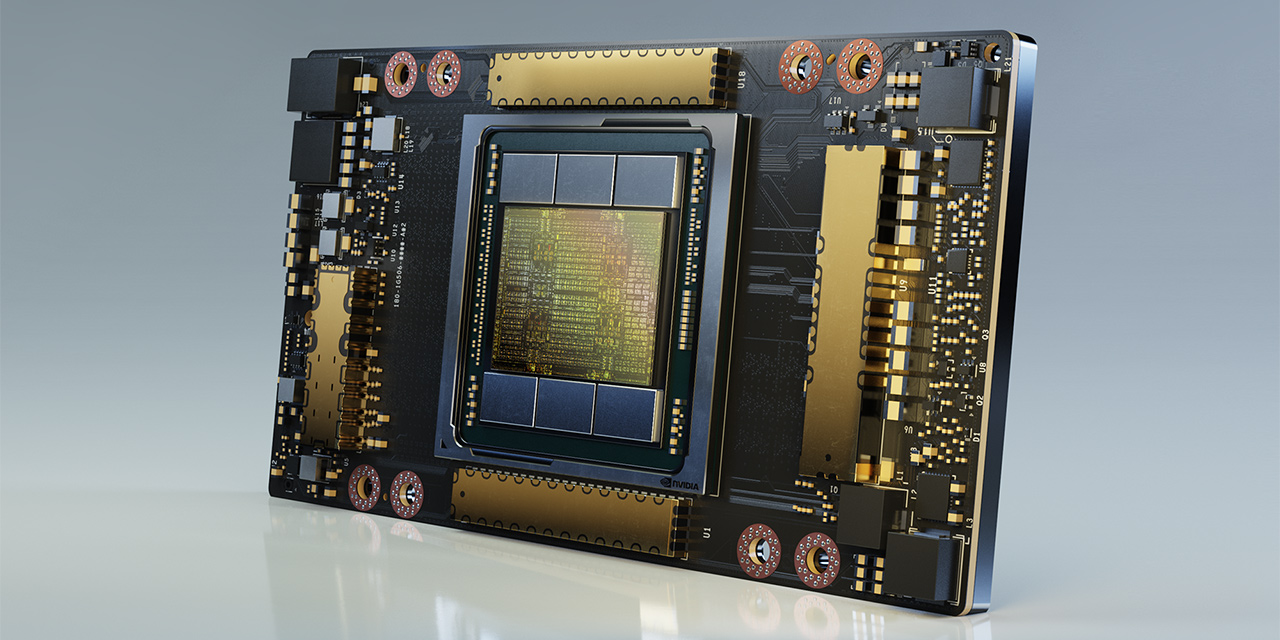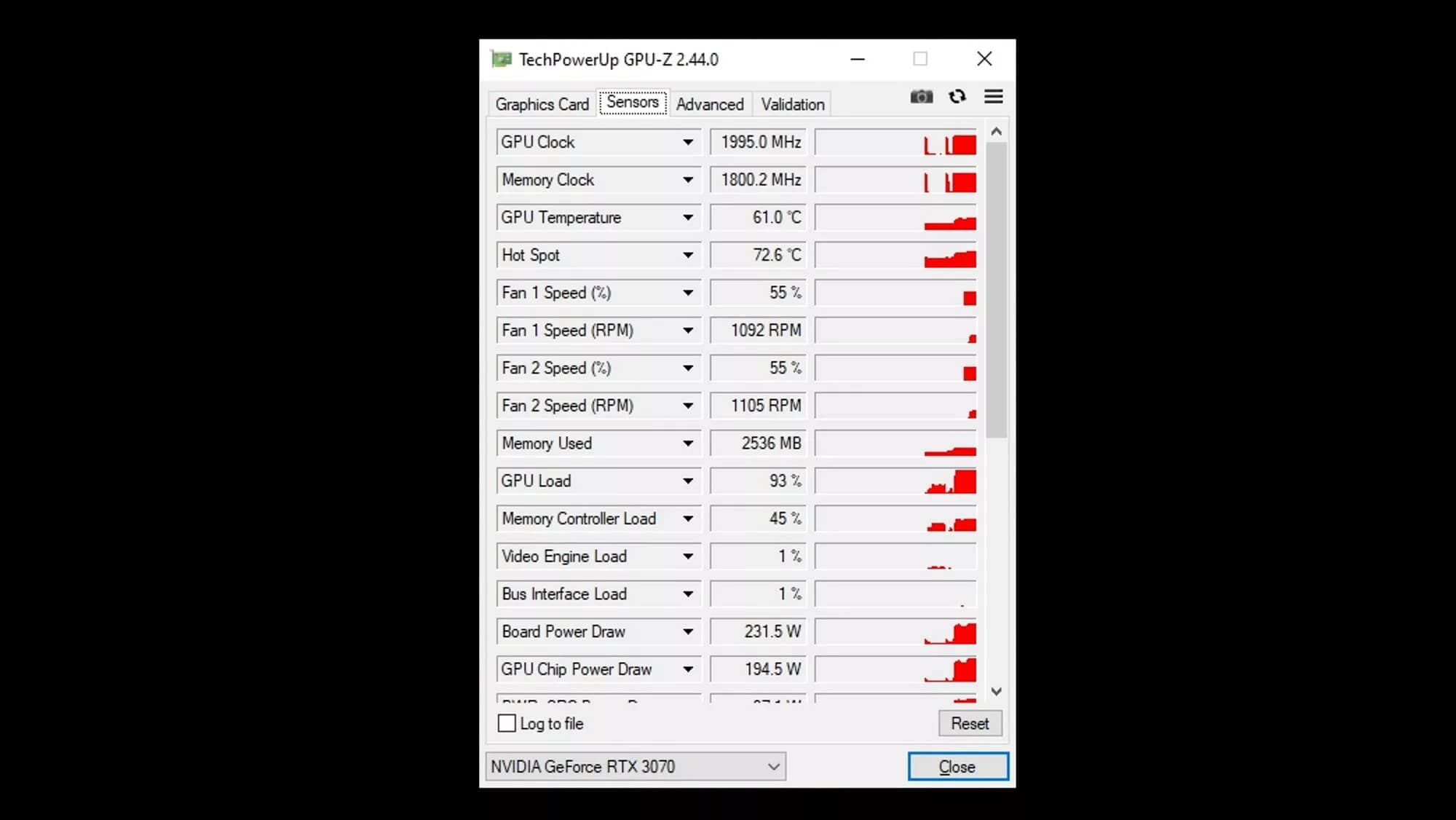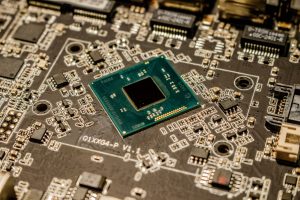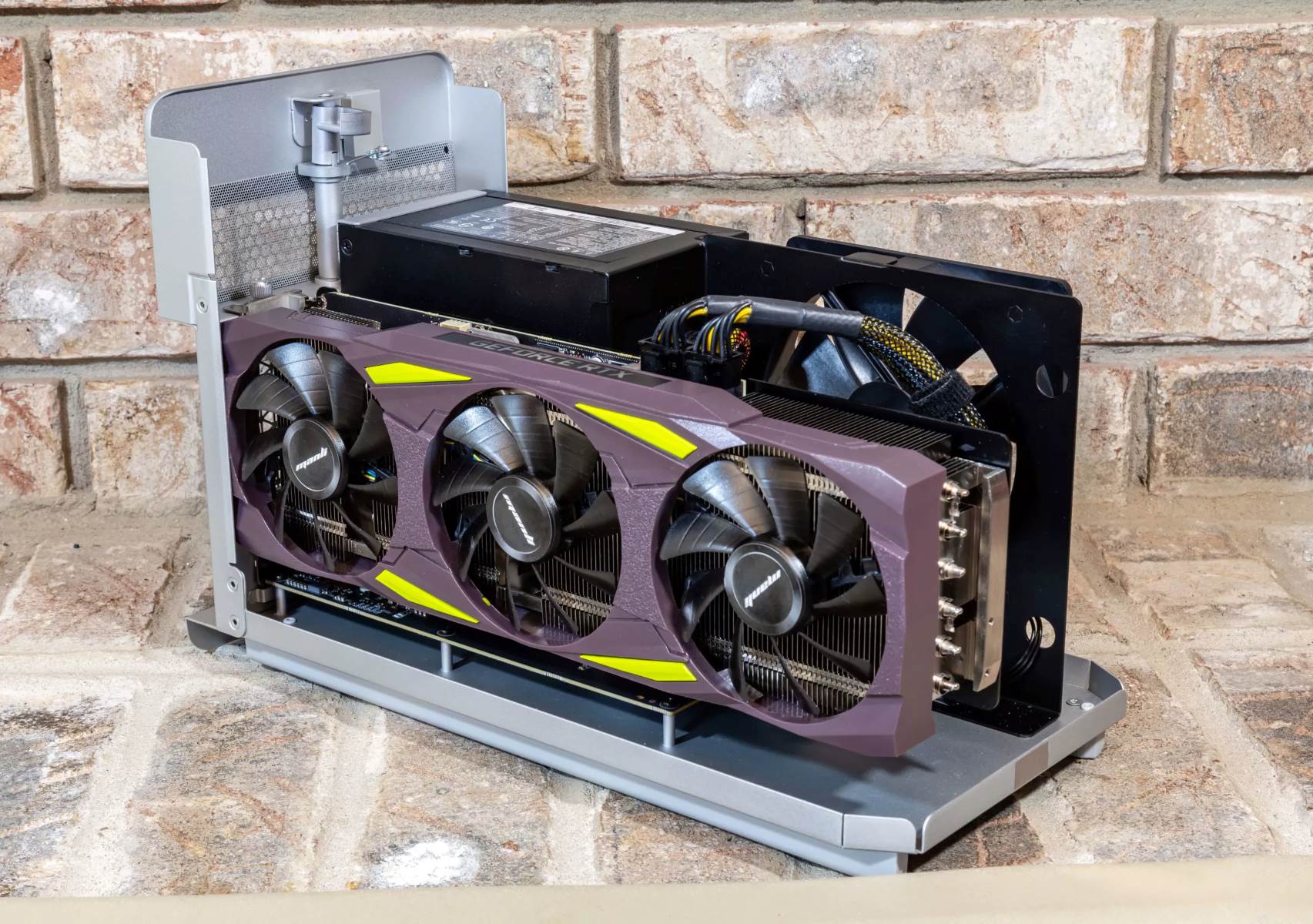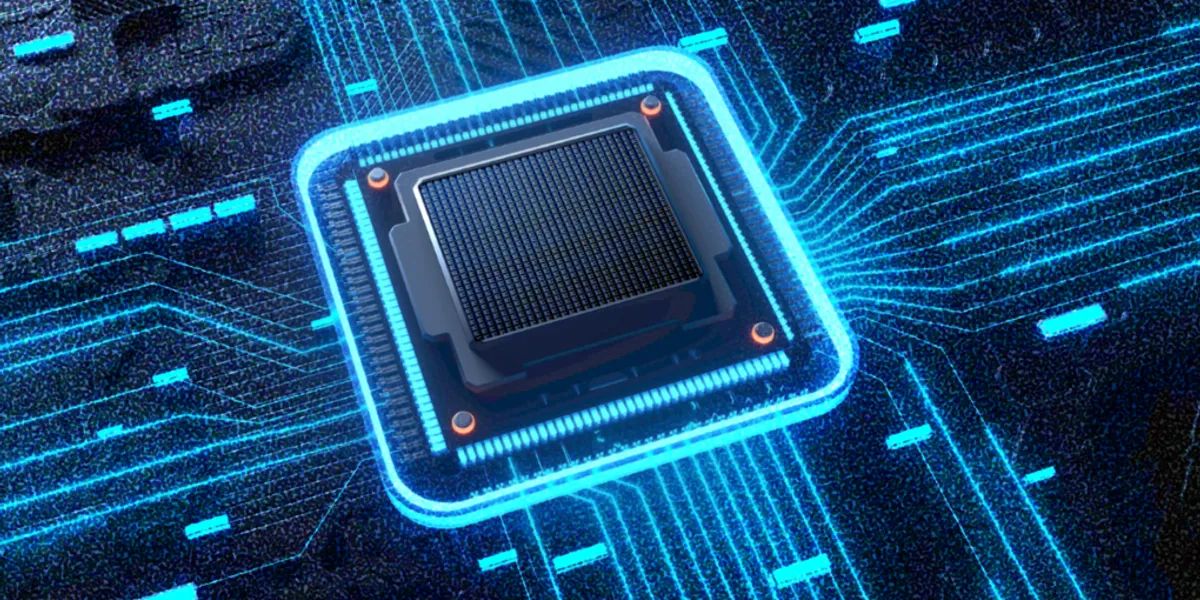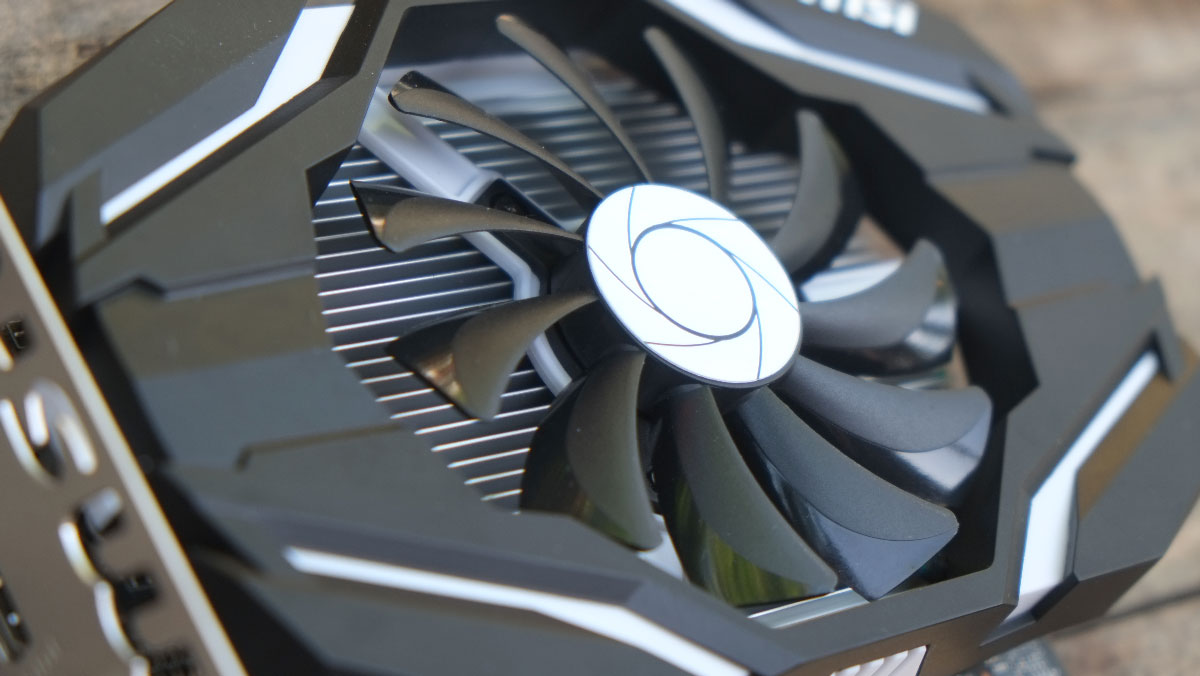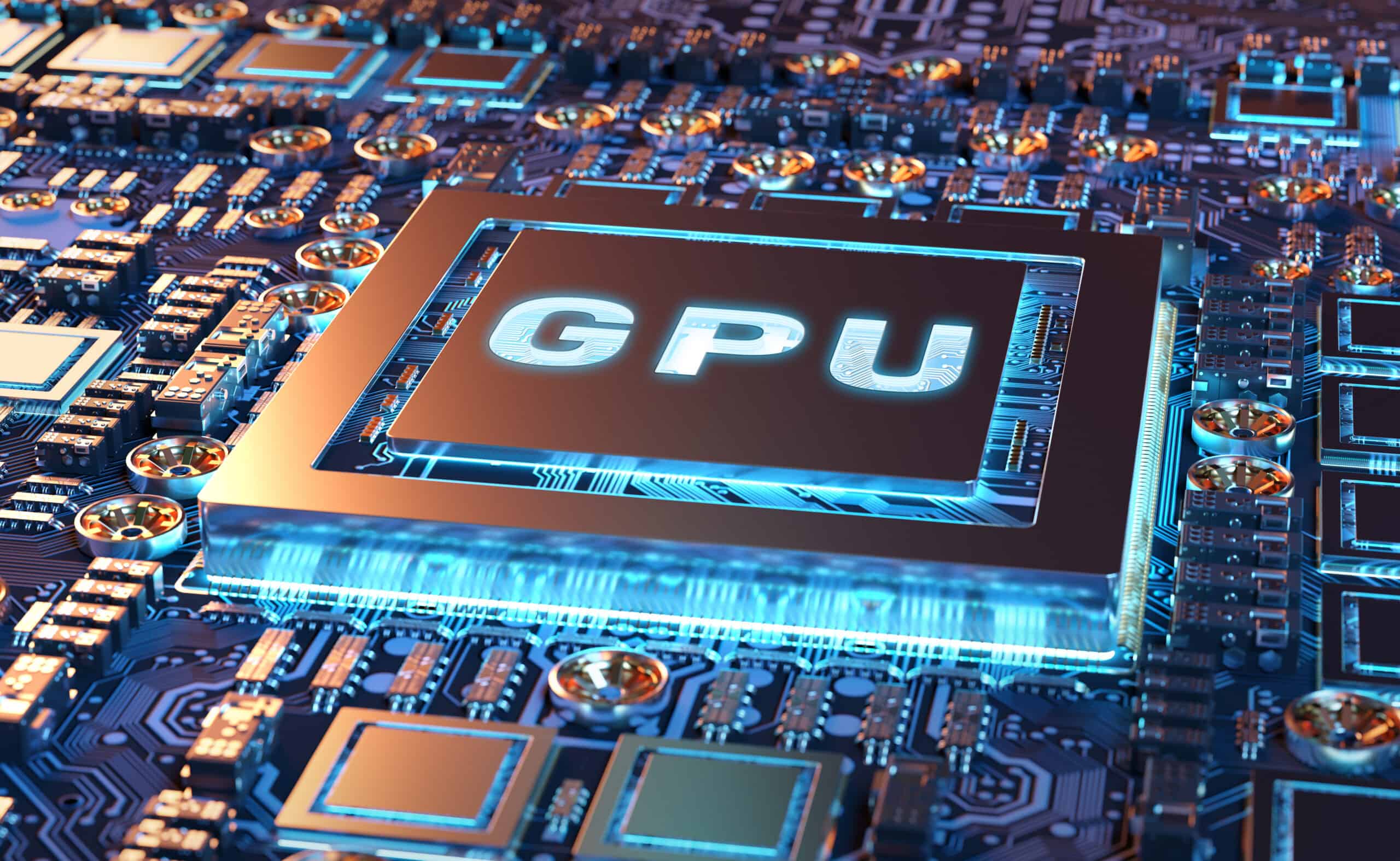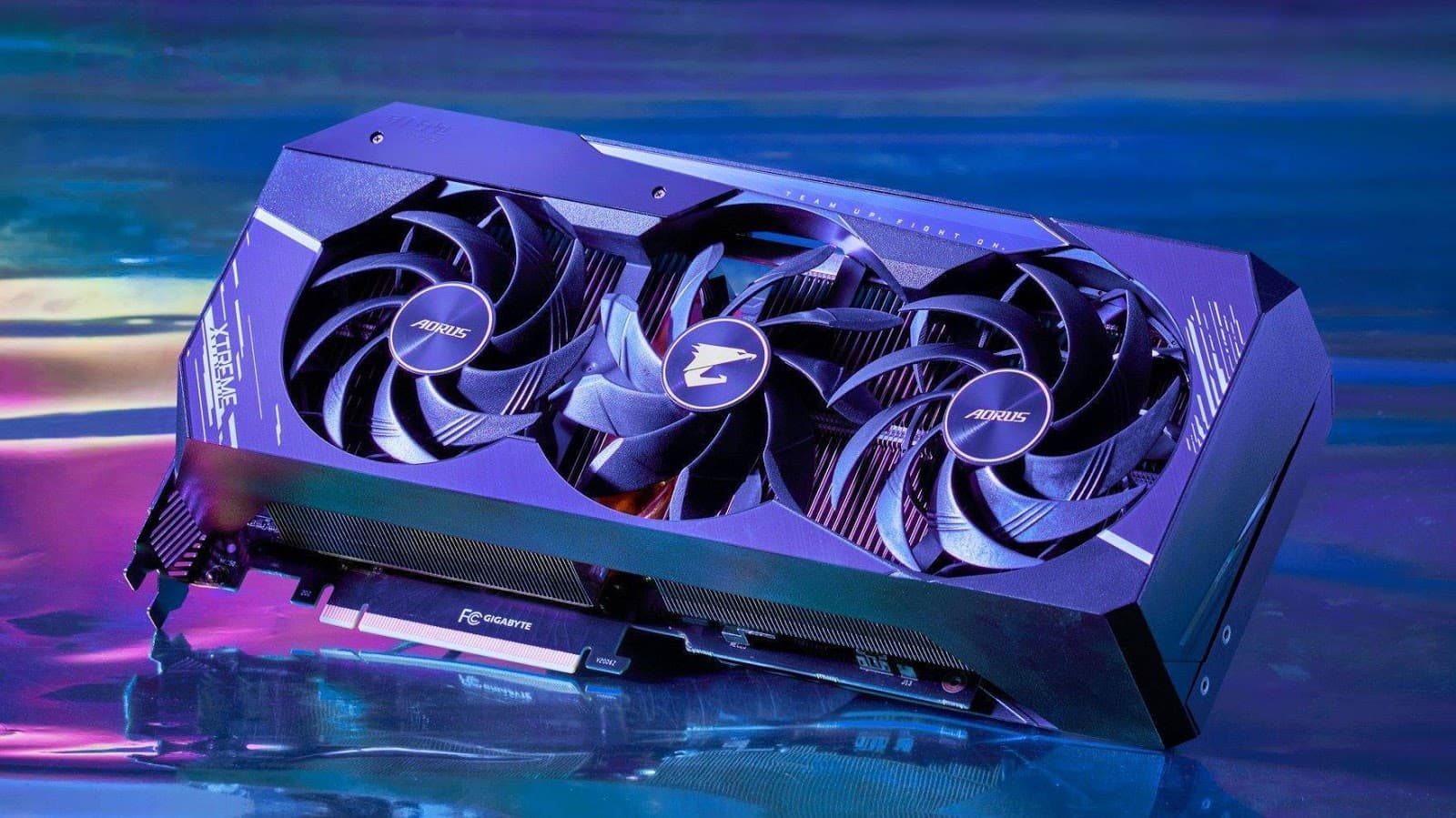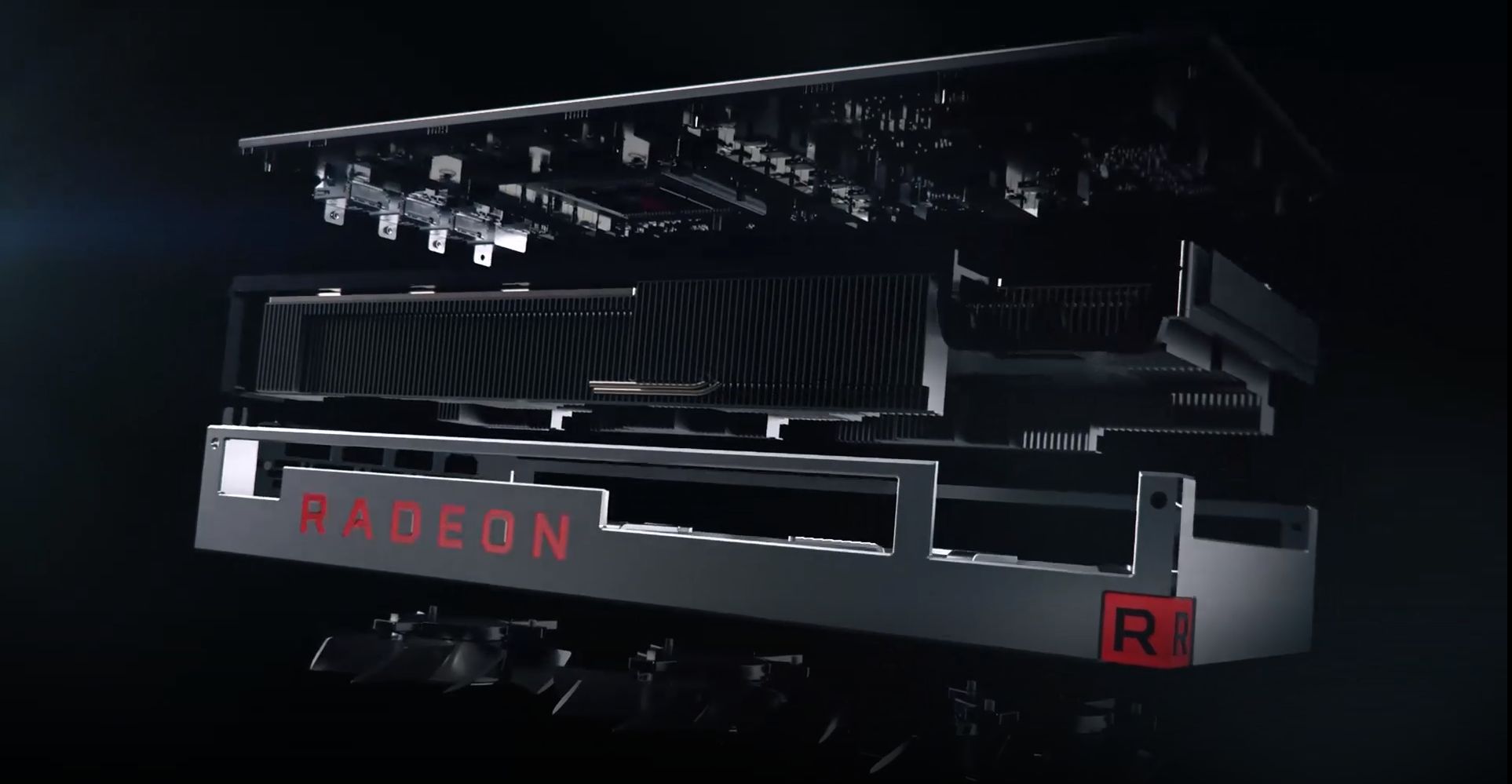Introduction
Graphics Processing Units, or GPUs, have become an integral part of modern computing and are widely used in various applications, from gaming and multimedia content creation to scientific research and artificial intelligence. When it comes to GPUs, one crucial component that often comes up in discussions is GPU cores. These cores play a significant role in determining the GPU’s performance and capabilities.
In this article, we will delve into the world of GPU cores, understand what they are, how they work, and explore their importance in gaming and other computational tasks. Whether you’re a gaming enthusiast looking to upgrade your system or a curious individual interested in learning more about computer hardware, this article will provide an insightful overview of GPU cores.
Before we dive into the details of GPU cores, let’s first understand the concept of a GPU itself.
A GPU is a specialized electronic circuit designed to rapidly process and render images, animations, and videos. Unlike the CPU (Central Processing Unit), which is the brain of a computer, responsible for executing general-purpose instructions and managing tasks, the GPU is specifically designed to handle complex graphics-related computations.
Now that we have a basic understanding of GPUs, let’s explore the concept of GPU cores and their role in enhancing the GPU’s performance.
What is a GPU?
A Graphics Processing Unit, or GPU, is a specialized electronic circuit that is designed to handle and accelerate the processing of graphics-related tasks. It is responsible for rendering images, animations, videos, and other visual elements we see on computer screens, gaming consoles, and even mobile devices.
Unlike the CPU, which is a general-purpose processor that performs a wide range of tasks, GPUs are highly specialized and optimized for parallel processing. This means that they excel at handling large amounts of data simultaneously, making them ideal for tasks that require complex mathematical calculations and intense graphical computations.
The main reason for the emergence of GPUs was the increasing demand for better visual experiences in computer games and the rapid growth of digital media. Traditional CPUs were not designed to handle the massive amount of data required to render realistic graphics in real-time, resulting in slow and choppy frame rates. GPUs, on the other hand, are designed with hundreds or even thousands of processing cores that can work in parallel, enabling them to perform complex calculations and render graphics much faster than CPUs.
Over time, GPUs have evolved to become more than just graphics processors. Their parallel computing power has made them indispensable in various fields, including scientific research, machine learning, and artificial intelligence. GPUs are now being used to accelerate complex simulations, train deep neural networks, and analyze vast amounts of data in real-time.
With advancements in technology, GPUs have become more powerful and efficient, allowing developers and content creators to push the boundaries of graphical fidelity and realism. From lifelike characters in video games to stunning visual effects in movies, GPUs have revolutionized the way we experience digital content.
In the next section, we will explore the inner workings of GPU cores and how they contribute to the overall performance of a GPU.
What are GPU cores?
GPU cores, often referred to as shader cores or stream processors, are the individual processing units within a graphics processing unit (GPU) that handle computation and rendering tasks. These cores are responsible for executing the complex calculations required for rendering graphics, including vertex transformations, lighting calculations, texture mapping, and pixel shading.
Each GPU core is essentially a tiny processor capable of performing multiple arithmetic and logic operations in parallel. They work together to process large amounts of data simultaneously, allowing for the rapid rendering of complex visual scenes.
Modern GPUs typically contain hundreds or even thousands of cores, depending on the model. The number of cores directly impacts the GPU’s performance, as higher core counts enable faster processing and improved graphics performance.
GPU cores are designed to handle parallel processing efficiently by executing instructions simultaneously across multiple data streams. This parallel architecture allows the GPU to tackle computationally intensive tasks more effectively than a traditional CPU, which is optimized for serial processing.
Each GPU core is capable of executing multiple threads, which are small units of work. This thread-level parallelism enables the GPU to process multiple tasks simultaneously, resulting in highly efficient computation and faster rendering times.
Furthermore, GPU cores are specifically optimized for rapidly processing graphical data, making them highly efficient at tasks such as rendering 3D graphics, applying post-processing effects, and handling complex mathematical calculations required for physics simulations.
In addition to their role in graphics processing, GPU cores are also utilized in general-purpose computing tasks, such as machine learning and scientific simulations. The parallel architecture of GPUs makes them well-suited for handling these types of computationally intensive workloads.
It’s important to note that the performance of a GPU is not solely determined by the number of cores it has. Other factors, such as memory bandwidth, clock speed, and architecture, also play a significant role in overall GPU performance.
Next, let’s take a closer look at how GPU cores work and the different types of cores found in modern GPUs.
How do GPU cores work?
GPU cores operate within a parallel computing architecture, allowing them to handle multiple tasks simultaneously and execute instructions more efficiently compared to traditional CPUs. To understand how GPU cores work, let’s dive into the key concepts that govern their operation.
Parallelism: GPU cores excel at parallel processing, meaning they can execute multiple instructions at the same time. This is achieved through the use of multiple cores and the ability to handle multiple threads, allowing for efficient computation and faster processing of tasks.
Thread Management: GPU cores manage multiple threads simultaneously, commonly using a technique called “warping”. A warp consists of a fixed number of threads executing instructions in lockstep. By grouping threads together, GPU cores can efficiently schedule and execute instructions across multiple data streams, optimizing performance and minimizing latency.
Data Processing: GPU cores are designed to process large amounts of data quickly. They perform numerous arithmetic and logic operations in parallel, allowing for efficient calculations required for rendering complex graphics. This includes tasks such as vertex transformations, lighting calculations, rasterization, and pixel shading.
Memory Hierarchy: GPUs have a hierarchical memory structure, consisting of multiple levels of cache memory. This allows GPU cores to access data quickly and efficiently. The hierarchy includes global memory (main memory), shared memory (shared among threads), and local memory (private to each thread). GPU cores employ various caching strategies to minimize memory access latency and optimize data retrieval.
Instruction Pipelining: GPU cores use pipelining techniques to maximize their efficiency. Pipelining enables the cores to overlap instruction fetch, decode, execution, and memory access stages, allowing multiple instructions to be processed simultaneously. This technique improves throughput and ensures a steady flow of data through the cores.
Specialized Processing Units: Modern GPUs often feature specialized processing units, such as texture mapping units (TMUs) and rasterizers, alongside the main cores. TMUs handle texture sampling and mapping, while rasterizers convert geometric shapes into pixels for rendering. These specialized units work in conjunction with the GPU cores to accelerate specific tasks and improve overall performance.
Overall, GPU cores are designed to handle parallel computations efficiently and process large amounts of data in a highly parallelized manner. The combination of parallel architecture, thread management, and specialized processing units enables GPUs to deliver exceptional performance in graphics processing and various other computational tasks.
Now that we have a better understanding of how GPU cores work, let’s explore the different types of GPU cores found in modern graphics cards.
Types of GPU cores
There are several types of GPU cores, each designed to handle specific tasks within the overall graphics processing pipeline. Let’s take a look at some of the most common types of GPU cores found in modern graphics cards.
Vertex Shader Cores: Vertex shaders are responsible for transforming 3D models and adjusting their positions, orientations, and sizes in a virtual three-dimensional space. Vertex shader cores carry out these calculations using mathematical functions, allowing for realistic 3D rendering and smooth animations.
Pixel Shader Cores: Pixel shaders, also known as fragment shaders, handle the shading and coloring of individual pixels on the screen. They determine how light interacts with the pixels, applying effects such as shadows, reflections, and specular highlights. Pixel shader cores are crucial for achieving realistic and visually appealing graphics.
Compute Cores: Compute cores, also known as general-purpose GPU (GPGPU) cores, are designed for non-graphics computations. These cores excel at parallel processing and are utilized in applications such as scientific simulations, machine learning, and data processing. Compute cores enable GPUs to perform complex calculations and accelerate various computational tasks beyond graphics rendering.
Texture Mapping Units (TMUs): Texture mapping units handle the process of mapping textures onto 3D models. They sample and fetch texture data from memory, applying it to pixels during the rendering process. TMUs play a vital role in enhancing the visual quality of rendered images, improving details and adding realism to textures.
Rasterization Units: Rasterization units convert geometric primitives, such as lines and polygons, into the pixels that make up the final rendered image. They determine which pixels should be shaded and colored based on the position of these primitives in space. Rasterization units help create the foundation of the rendered image before additional effects are applied.
Geometry Shader Cores: Geometry shader cores take input from the vertex shader and generate new geometry on the fly. They can create additional vertices and primitives, allowing for more complex and detailed models. Geometry shader cores are especially beneficial for dynamic terrain generation, particle systems, and other geometry manipulation tasks.
Memory Cores: Memory cores, also known as memory controllers or memory interfaces, manage the flow of data between the GPU cores and the GPU’s memory subsystem. They ensure efficient data transfer and facilitate the storage and retrieval of textures, shaders, and other graphical data. Memory cores play a crucial role in achieving high-performance graphics processing.
These are just a few examples of the types of GPU cores typically found in modern graphics cards. The specific configuration and combination of cores vary between different GPU architectures and models, enabling customization to meet the specific requirements of different applications and use cases.
Now that we have explored the different types of GPU cores, let’s delve into the importance of GPU cores in gaming.
Importance of GPU cores in gaming
GPU cores play a vital role in gaming, as they are responsible for rendering the visuals, applying effects, and delivering a smooth and immersive gaming experience. Let’s explore the importance of GPU cores in gaming and how they contribute to overall performance.
Graphics Processing: One of the primary functions of GPU cores in gaming is to handle the processing of graphics. They execute complex calculations required for tasks such as rendering 3D models, applying textures, calculating lighting effects, and rendering realistic shadows. The more GPU cores a graphics card has, the more computations it can handle simultaneously, resulting in higher frame rates and better graphical fidelity.
Visual Quality: GPU cores significantly impact the visual quality of games. Higher core counts allow for more detailed and intricate graphics, smoother animations, and improved special effects. GPU cores handle calculations related to anti-aliasing, anisotropic filtering, and post-processing effects, giving gamers a visually stunning and immersive gaming experience.
Frame Rates: GPU cores play a crucial role in determining the frame rates a gaming system can achieve. Higher core counts and faster clock speeds enable GPUs to process and render frames more quickly, resulting in smoother gameplay. GPU cores handle the complex calculations required to render and display each frame, ensuring the game performs optimally and remains responsive.
Multi-Monitor and High-Resolution Support: GPU cores are essential when it comes to supporting multiple monitors or driving high-resolution displays. The increased number of cores allows the GPU to handle the additional graphics output and rendering required for more screens or higher pixel densities. Gamers who prefer multi-monitor setups or gaming at 4K resolutions rely on the power of GPU cores to deliver seamless and visually stunning experiences.
Virtual Reality (VR) Support: VR gaming places significant demands on GPUs due to the high frame rates and rendering requirements. GPU cores are critical in providing the processing power necessary for a smooth and immersive VR experience. They handle the rendering of separate images for each eye, reducing motion sickness, and ensuring a seamless transition between the virtual world and the real world.
Compatibility with Game Engines: Many popular game engines, such as Unreal Engine and Unity, utilize GPU cores efficiently to optimize rendering and performance. Game developers harness the power of GPU cores through various APIs, such as DirectX and Vulkan, to create visually stunning games that take full advantage of modern graphics hardware.
Overall, GPU cores are paramount in gaming, delivering the graphical performance and visual quality that gamers demand. Their parallel processing capabilities, combined with their ability to handle complex calculations and render realistic graphics, make GPU cores an integral part of modern gaming systems.
Now that we understand the importance of GPU cores in gaming, let’s compare them to CPU cores to see how they differ in function and performance.
GPU cores vs CPU cores
GPU cores and CPU cores are two distinct types of processing units that serve different purposes within a computer system. Let’s compare GPU cores and CPU cores to understand their differences in function and performance.
Parallel Processing: GPU cores are highly optimized for parallel processing, as they are designed to handle a large number of threads and perform multiple calculations simultaneously. This makes them ideal for tasks that involve parallelizable workloads, such as graphics rendering and scientific simulations. CPU cores, on the other hand, excel at sequential processing and executing a wide range of general-purpose instructions.
Specialization: GPU cores are specialized processors designed specifically for graphics processing, while CPU cores are general-purpose processors capable of performing a wide range of tasks. GPU cores are optimized for performing complex mathematical calculations required for rendering visuals, while CPU cores are designed to handle various tasks, including running applications, managing system resources, and executing operating system functions.
Core Count: GPUs typically have a significantly higher number of cores compared to CPUs. While a modern CPU may have up to 16 cores, high-end GPUs can have thousands of cores. The large number of GPU cores allows for massive parallelization, enabling the processing of vast amounts of data simultaneously and accelerating graphics-intensive tasks.
Architecture: GPU cores are built using a massively parallel architecture, with each core executing instructions independently. CPU cores, on the other hand, typically have a more complex and advanced architecture, with features such as branch prediction, out-of-order execution, and larger caches. These architectural differences reflect the varying design goals of GPUs and CPUs.
Workload Distribution: GPUs excel at handling highly parallelizable tasks that can be divided into smaller, independent computations. They distribute the workload across multiple cores efficiently, resulting in faster processing. CPU cores are better suited for sequential and single-threaded workloads, where complex dependencies and conditional logic make parallel execution less efficient.
Power Efficiency: In terms of power consumption, GPU cores generally require more power compared to CPU cores, as they have a higher number of cores and run at higher clock speeds. However, when it comes to performance per watt, GPUs can often deliver superior results due to their highly parallel architecture and ability to efficiently execute parallel workloads.
Flexibility and Programmability: CPU cores offer greater flexibility and programmability compared to GPU cores. CPUs can execute various types of instructions and handle different types of tasks efficiently, making them suitable for a wider range of applications and scenarios. GPU cores, although highly capable in graphics processing, are less flexible and require specialized programming techniques, such as shader languages, to harness their full potential.
While both GPU cores and CPU cores serve essential roles in computing, their distinct designs and architectures make them suitable for different types of tasks. Understanding the strengths and limitations of each type of core is crucial in optimizing performance and choosing the right hardware for specific applications and workloads.
Now that we’ve explored the differences between GPU cores and CPU cores, let’s conclude our discussion.
Conclusion
GPU cores play a crucial role in modern computing, particularly in graphics processing tasks such as gaming, multimedia content creation, and scientific simulations. These specialized processing units are designed to handle parallel processing efficiently, allowing for the rapid execution of complex calculations required for rendering realistic graphics and delivering immersive visual experiences.
In this article, we explored the concept of GPU cores and their significance in various aspects of computing. We started by understanding what a GPU is and how it differs from a CPU. We then delved into the details of GPU cores, learning about their parallel processing capabilities, their role in handling tasks such as vertex transformations and pixel shading, and their involvement in graphics rendering pipelines.
We also discussed different types of GPU cores, including vertex shader cores, pixel shader cores, compute cores, texture mapping units, rasterization units, geometry shader cores, and memory cores. Each type of core serves a specific function within the broader scope of graphics processing, contributing to the overall performance and visual quality in gaming and other applications.
Furthermore, we compared GPU cores to CPU cores, highlighting their differences in terms of parallelism, specialization, core count, architecture, workload distribution, power efficiency, flexibility, and programmability. While GPU cores excel at parallel processing and graphics-intensive tasks, CPU cores offer greater flexibility and handle a wider range of general-purpose computing tasks.
In conclusion, GPU cores are instrumental in driving the advancement of graphics processing, enabling realistic visuals, high frame rates, and immersive gaming experiences. Their parallel processing capabilities and specialized architecture make them indispensable in various fields, from gaming and entertainment to scientific research and artificial intelligence.
As technology continues to advance, we can expect further developments in GPU cores, leading to even more powerful and efficient graphics processing units. The relentless pursuit of better performance and visual quality in gaming and other applications will continue to drive the evolution of GPU cores, ensuring that computers can deliver breathtaking graphics and realistic virtual environments.







